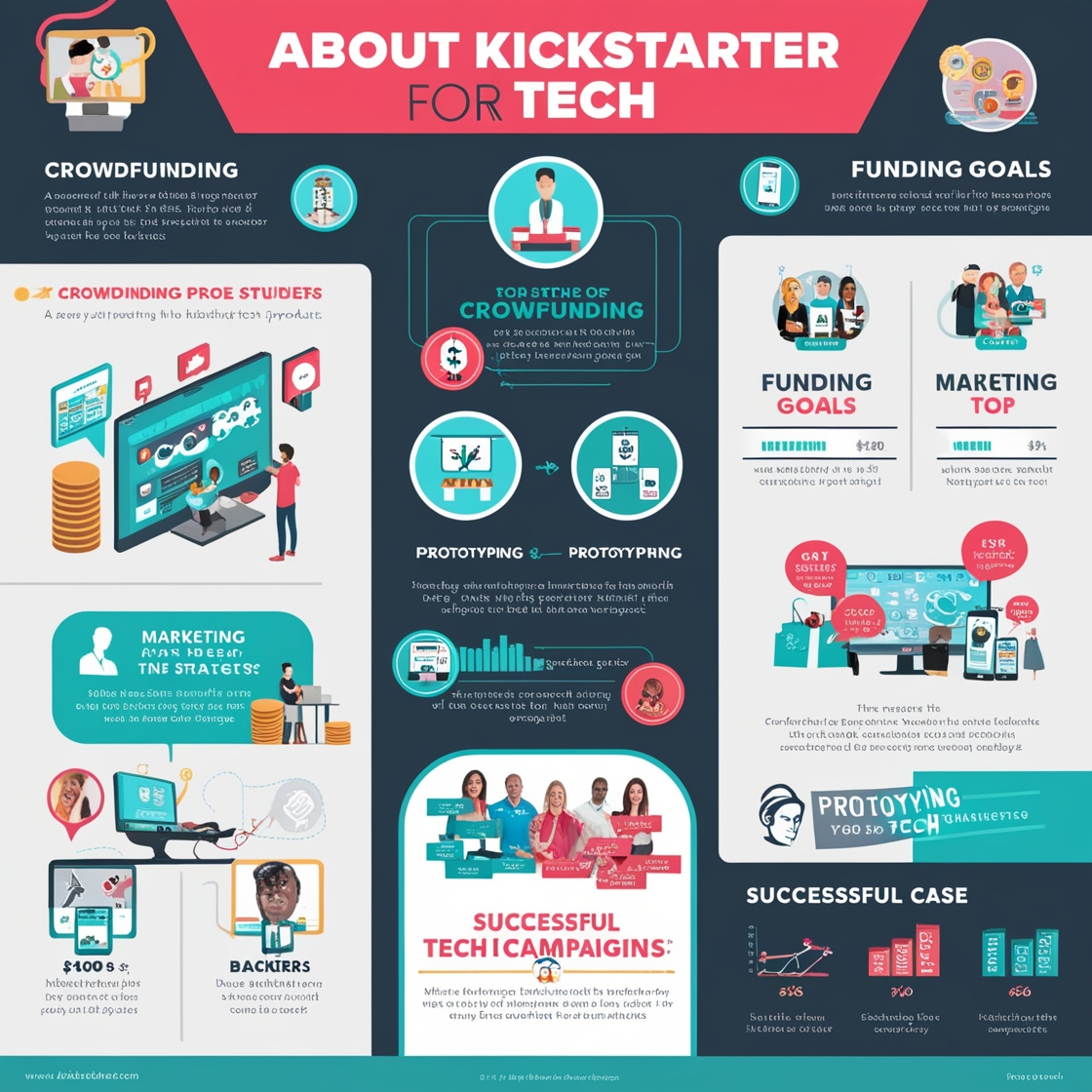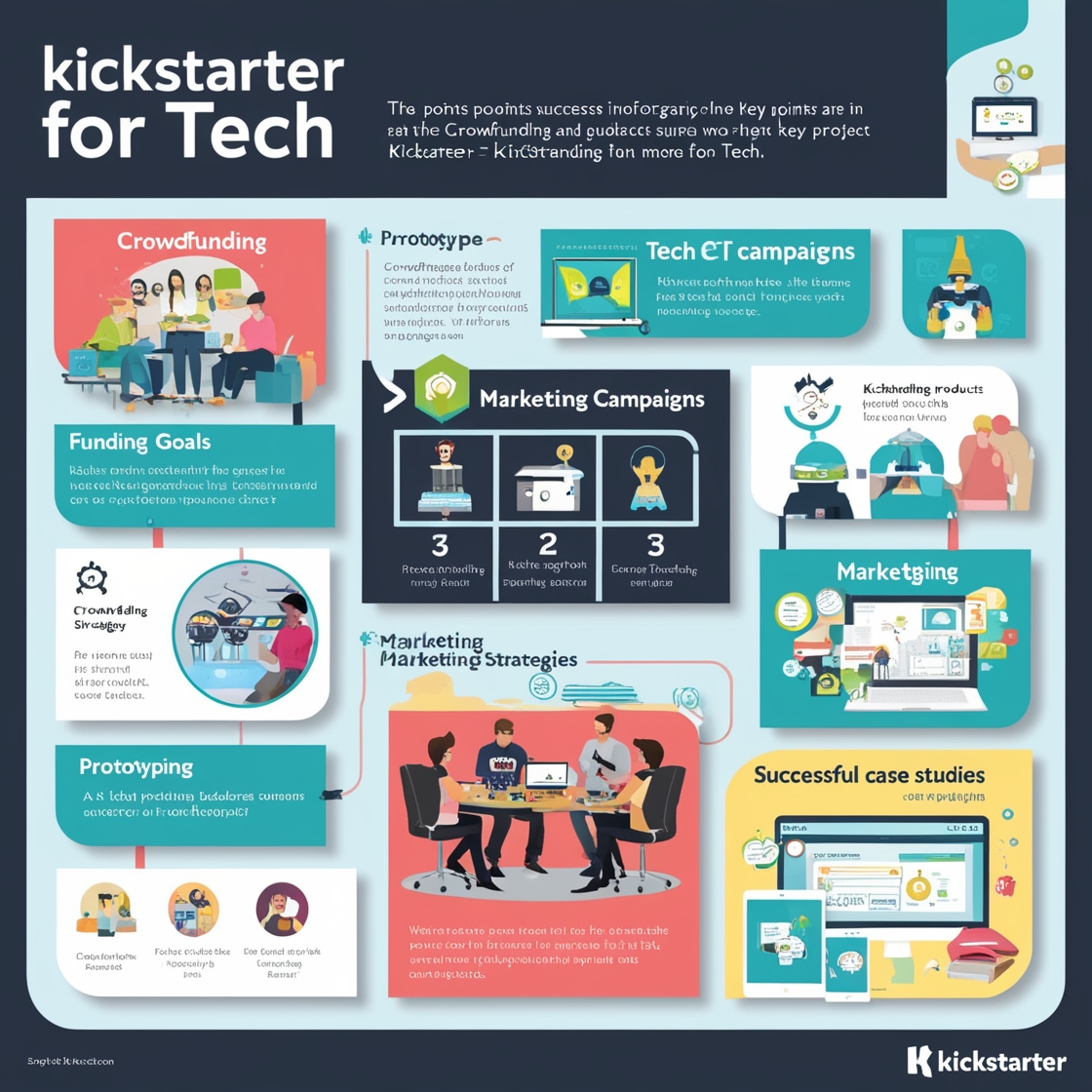- December 30, 2024
Kickstarter for Tech: A Comprehensive Guide to Crowdfunding Your Innovative Idea

Kickstarter for Tech: A Comprehensive Guide to Crowdfunding Your Innovative Idea
In today’s world, innovation thrives through collaboration, and Kickstarter has emerged as a powerful platform to fuel creativity and bring cutting-edge tech products to life. With a focus on Kickstarter for tech, this guide delves into how you can leverage crowdfunding to turn your tech idea into a reality. Whether you’re a startup founder or a tech enthusiast, Kickstarter provides an opportunity to build a community, secure funding, and validate your product.
Introduction to Crowdfunding for Technology
Crowdfunding has transformed the way tech startups raise capital. Platforms like Kickstarter provide creators with a chance to present their ideas to the public and raise funds without needing traditional venture capital. In tech, crowdfunding has become an essential tool for launching everything from new gadgets to software and hardware innovations. By engaging a community of backers, creators not only raise money but also validate their ideas in real time.
How to Launch a Tech Campaign on Kickstarter
To kickstart your tech campaign, you’ll need a compelling project page. This includes a clear, concise description of your tech product, how it works, and why it matters. Key elements of a successful campaign include:
- Creating a prototype: Backers need to see a working model of your product. A prototype demonstrates feasibility and builds trust.
- Setting a funding goal: Establish how much capital you need to bring your tech to life, factoring in development, production, and shipping costs.
- Crafting engaging visuals: Use high-quality images, videos, and animations to showcase your product’s features and potential.
Best Practices for a Successful Tech Kickstarter Campaign
Success on Kickstarter requires more than just an idea—it takes careful planning and execution. Follow these best practices to increase your chances of success:
- Engage with your audience: Regular updates and transparent communication are key to building trust with backers.
- Offer attractive rewards: In tech campaigns, rewards often include early access to the product, exclusive features, or discounts for backers.
- Tell your story: Backers want to know who you are, why your project matters, and how it will change the market.
Common Challenges for Tech Kickstarter Projects
While Kickstarter provides opportunities, there are several challenges you may encounter:
- Funding shortfalls: Sometimes, campaigns fail to meet their goals. It’s important to have a backup plan for marketing and boosting visibility.
- Manufacturing delays: Tech products often require refinement and adjustments during production, which can lead to delays.
- Overpromising features: Ensure that you are transparent about what your tech can deliver to avoid disappointing backers.
Tech Trends on Kickstarter
Kickstarter has hosted countless groundbreaking tech innovations, and it’s essential to understand current trends to make your project stand out. Popular tech trends include:
- Wearables: Smartwatches, fitness trackers, and AR glasses continue to capture the imagination of backers.
- Smart Home Devices: Gadgets that enhance home automation, security, and convenience.
- Sustainable Tech: Eco-friendly tech solutions are gaining traction, with projects focusing on reducing energy consumption or using recyclable materials.
Case Studies: Successful Tech Kickstarter Projects
Several tech projects have raised millions on Kickstarter, demonstrating the platform’s potential for success. For instance:
- Pebble Smartwatch: This wearable raised over $10 million in its campaign, proving the massive demand for innovative smartwatches.
- Oculus Rift: Before being acquired by Facebook, the Oculus Rift VR headset raised over $2 million on Kickstarter, revolutionizing virtual reality.
Ethical and Legal Considerations in Tech Crowdfunding
Crowdfunding involves legal and ethical considerations that tech creators must address:
- Intellectual Property Protection: Make sure you have proper protection for your tech idea before you reveal it on a public platform.
- Honesty in Deliverables: Be transparent about your progress and the challenges you face. Misleading backers can result in legal consequences and loss of trust.
The Future of Tech Crowdfunding
As technology evolves, so does crowdfunding. The future of tech on Kickstarter may see the rise of AI-driven products, biotechnology, and even space exploration. Crowdfunding will continue to serve as an incubator for bold, out-of-the-box ideas, making it easier for innovators to gain the funding and support needed to succeed.
Marketing Strategies for Tech Kickstarter Campaigns
Effective marketing can make or break your Kickstarter project. Consider these strategies:
- Leverage Social Media: Create a buzz around your tech project on platforms like Instagram, Facebook, and Twitter.
- Use Influencer Marketing: Collaborate with tech influencers who can share your project with a larger audience.
- Email Campaigns: Keep your early supporters engaged with regular emails leading up to the launch.
Building a Prototype for Kickstarter
A working prototype is often the most important part of your campaign. It gives backers confidence in your ability to deliver and helps them visualize how your product works. Invest time and resources in creating a prototype that accurately reflects your final product.
Managing Backer Expectations and Communication
Clear communication is key to maintaining trust with backers. Regularly update your backers on project milestones, changes to the timeline, or any unexpected challenges. Promptly responding to messages and concerns helps foster a strong relationship with your backers.
Funding Models and Financial Strategies on Kickstarter
Kickstarter’s all-or-nothing funding model means you only receive funds if you meet your funding goal. Understanding this is crucial for managing your financial strategy. Ensure you set a realistic funding goal that aligns with your project’s scope and required resources.
Risk Management in Tech Crowdfunding
Tech crowdfunding comes with risks, including:
- Underestimating costs: Don’t forget to account for all costs—production, shipping, taxes, and unexpected delays.
- Reputation damage: Failing to meet delivery promises can harm your reputation and future projects.
- Market uncertainty: Ensure there is a market demand for your tech product before launching.
Understanding Kickstarter’s All-or-Nothing Funding Model
The all-or-nothing funding model is one of Kickstarter’s defining features. This means if you don’t reach your funding target, you don’t receive any funds. It encourages creators to be transparent and realistic about their goals and capabilities, which ultimately benefits both creators and backers.
Post-Campaign: Delivering on Promises and Scaling Up
Once your campaign is successful, the hard work continues. Post-campaign involves:
- Fulfilling orders: Manufacturing and shipping the product to your backers on time.
- Scaling up: As your tech grows in popularity, you may need to consider expanding your production capabilities or seeking additional funding.
- Customer support: Addressing any issues or feedback from backers helps build a loyal customer base for future projects.
Conclusion
Kickstarter for tech offers an incredible opportunity for creators to bring their ideas to life. However, it requires careful planning, transparency, and effective communication. By following best practices, managing risks, and engaging with your backers, you can create a successful campaign that not only funds your tech innovation but also establishes a community of loyal supporters.